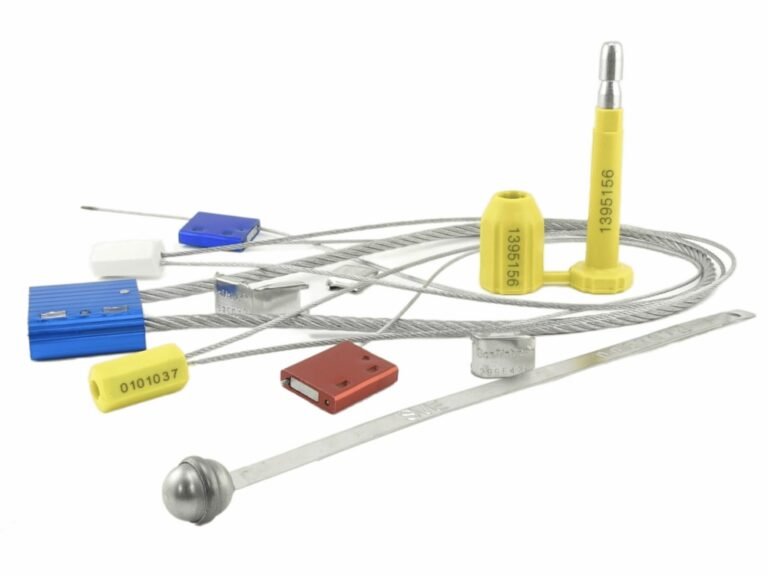You've selected a high-strength security seal, but have you unknowingly left a massive vulnerability wide open? An uncustomized, generic seal can be replaced with an identical one, completely bypassing its security function.
Customization is not decoration; it is the most cost-effective security upgrade you can make. A unique logo, serial number, and barcode transform a generic lock into a non-replicable "identity credential" for your supply chain, making surreptitious replacement nearly impossible.
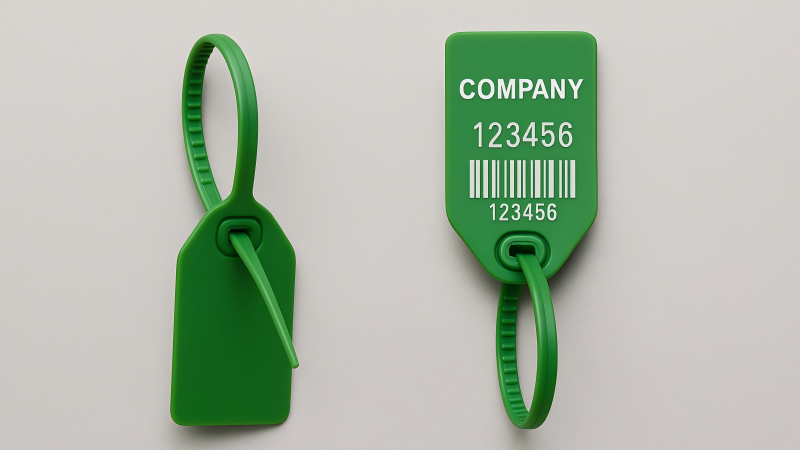
I've seen it happen. A client invested heavily in high-security bolt seals for a cross-country shipment. The cargo vanished, yet the container arrived with a perfectly intact seal. The problem? The thieves simply cut off the generic seal and replaced it with an identical, off-the-shelf one. The physical strength was irrelevant because the seal had no unique identity. This taught me a critical lesson: a seal's security is not just in its physical toughness, but in its uniqueness. We must treat the details of a custom logo and serial number with the same seriousness we apply to tensile strength.
Why a Strong but Generic Seal is a Broken Promise?
Do you believe a high tensile strength rating guarantees your cargo's security? This common belief overlooks a simple but devastating method of attack: the clone and replace.
A seal's true security function is to provide non-repudiable evidence of tampering. If an attacker can replace your generic seal with an identical one, the seal has failed completely, creating a false sense of security and a broken audit trail.
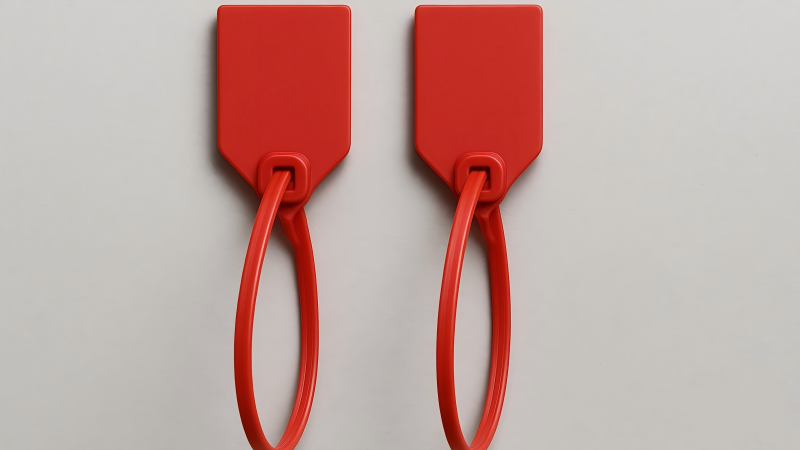
The entire principle of a security seal rests on it being a unique marker in time and space. When a seal is applied, you are creating a singular, verifiable fact. However, if that seal is a generic product, that "fact" can be erased and rewritten by a thief. The thief isn't fighting the seal's strength; they are erasing its existence and replacing it with a forgery. In this scenario, your logbook entry with the seal number is useless, as the new seal tells a convincing lie.
| Security Aspect | Generic (Uncustomized) Seal | Customized Seal |
|---|---|---|
| Tamper Evidence | Fails if replaced with an identical seal. | Replacement with a duplicate is virtually impossible. |
| Visual Verification | Impossible to verify authenticity at a glance. | Logo provides immediate, recognizable proof of ownership. |
| Audit Trail | Weak and easily falsified. | Robust; unique numbers/barcodes create a strong, verifiable record. |
| Deterrence | Low; invites replacement attacks. | High; visibly unique seals deter opportunistic thieves. |
How Does Customization Turn a Seal into an Identity Credential?
Are you treating the customization options on your seals as mere afterthoughts? This mindset misses the opportunity to embed layers of security into the seal itself, turning it from a passive lock into an active security asset.
Each layer of customization—logo, name, serial number, barcode—adds a unique identifier. This transforms the seal into an exclusive "identity credential" that is inextricably linked to your company and your specific shipment, making it exponentially harder to forge.
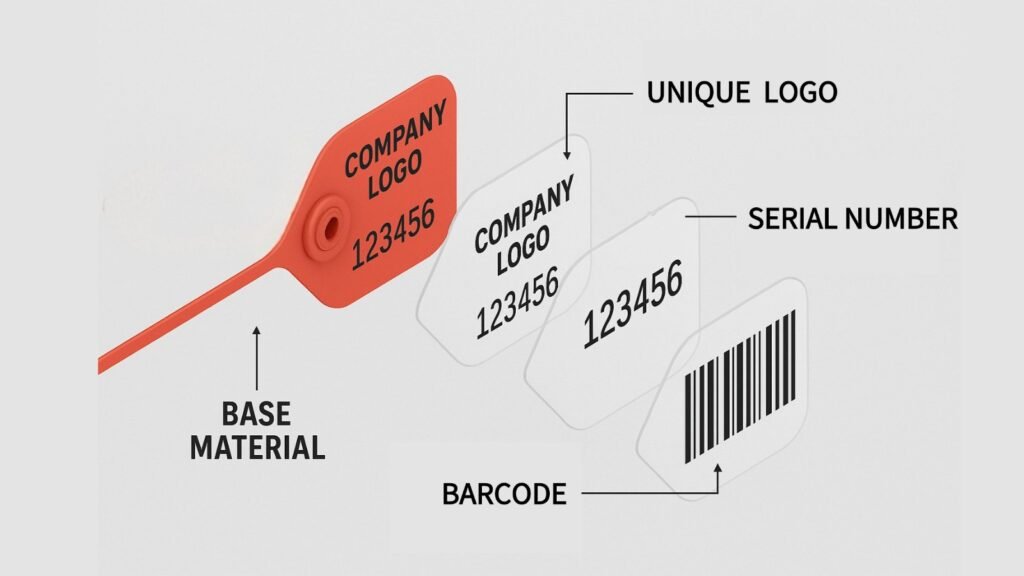
Think of it like a passport. A blank passport book has some inherent security features, but its real power comes from the unique photo, name, and number printed inside it. It's the same with security seals. The plastic or metal is the book; the customization is what makes it a unique and verifiable document.
The Power of a Logo
A clear, laser-engraved logo is the first line of defense. It's a visual deterrent that tells a potential thief this is not a generic, easily replaceable item. It is being monitored by a specific company.
The Forensic Trail of Serial Numbers
A unique, sequential serial number is the cornerstone of a credible Chain of Custody. It ensures that the seal applied at the origin is the exact same one checked at the destination. There is no ambiguity. We recommend never letting your supplier choose the number range; you should specify and track it.
The Digital Link of Barcodes & QR Codes
Barcodes and QR codes integrate the physical seal directly into your digital logistics system. This eliminates manual data entry errors and creates an instant, accurate record every time the seal is scanned. It links the physical "identity credential" to its digital twin in your database.
Is Customization Worth the Investment?
Are you hesitating to customize because of a slightly higher per-unit cost or longer lead times? This is a classic case of viewing a critical security investment as a simple operational expense.
The small premium for customization is negligible when compared to the cost of a single lost or compromised shipment. It is the most cost-effective way to close the "clone and replace" vulnerability that physical strength alone cannot prevent.
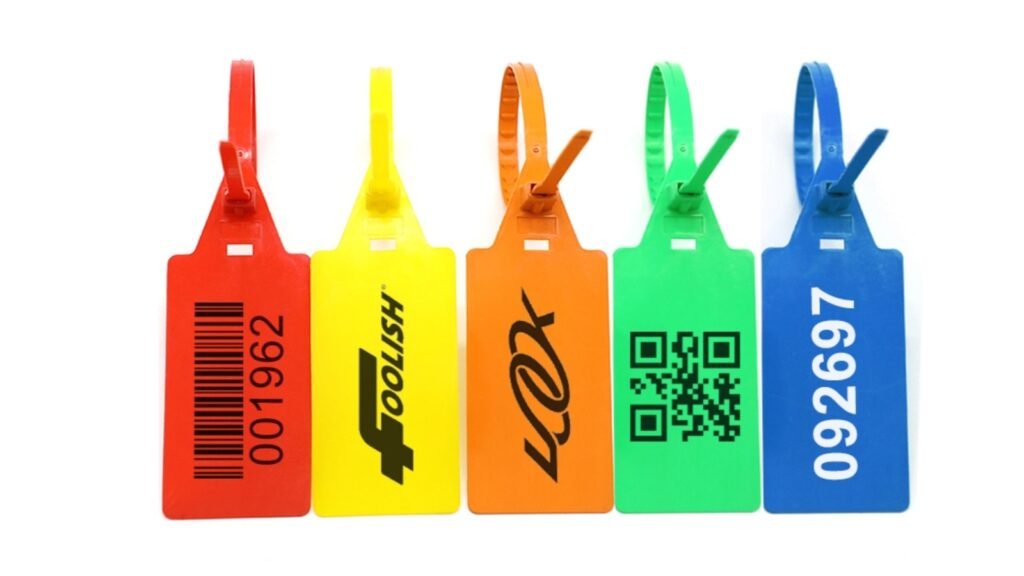
Let's be perfectly clear: customization is not a luxury. In today's logistics environment, it is a necessity. A procurement manager who opts for a generic seal to save a few cents is making a poor economic decision. They are accepting a massive risk to save a tiny amount of money. The cost of a security breach isn't just the value of the goods; it's the damage to your reputation, the cost of investigations, and the potential loss of customer trust. The counterfeit and replacement risk increases exponentially with generic seals. When you analyze the potential downside, the decision becomes simple. The investment in customization offers an unparalleled return in risk mitigation.
Conclusion
Customization is not a feature; it's a security strategy. By treating your seal's unique identifiers with the same rigor as its physical strength, you transform it from a generic lock into a powerful, non-replicable identity credential.
Forge Your Seal's Unique Identity with ProtegoSeal
Don't leave a gaping hole in your security for thieves to exploit. A generic seal is an open invitation. At ProtegoSeal, we treat customization with the seriousness it deserves, from precise logo engraving to secure management of your unique serial numbers. Contact us to design a seal that provides a true identity for your cargo and an unbreakable link in your supply chain.

